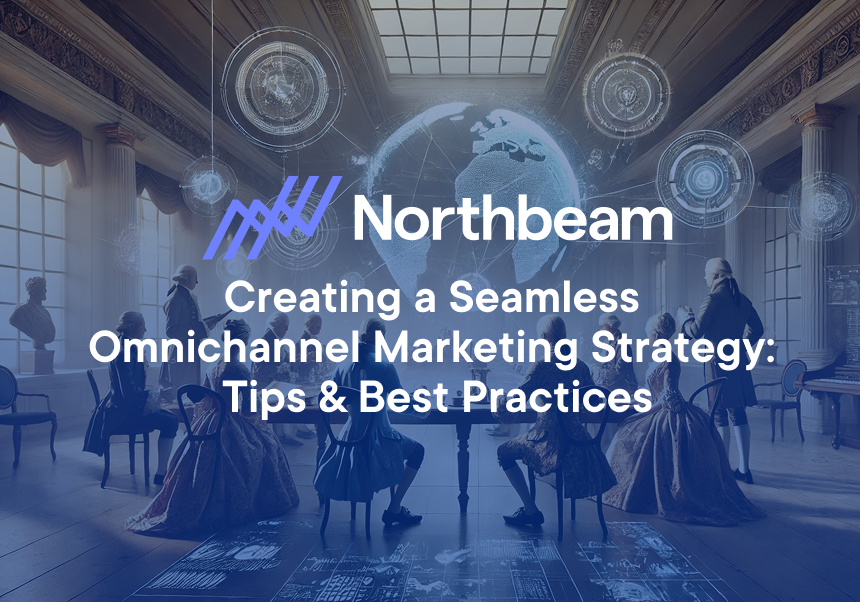How can you make effective, strategic marketing decisions if you don’t know the impacts of your efforts? This is where marketing attribution comes in.
In today’s hyper-competitive digital landscape, understanding the effectiveness of your marketing efforts is crucial for sustained and scalable growth. Marketing attribution is how you “attribute” sales or conversions to different touchpoints in a customer’s journey.
In this guide, we’ll break down what marketing attribution is, cover its various models, and help you understand how to implement it to improve your marketing strategy.
What is marketing attribution?
As stated above, marketing attribution is the process of evaluating the impact of different marketing efforts across a customer journey. When a customer interacts with your ads and content across multiple channels, attribution models help you determine which of these channels had an impact on an ultimate conversion or sale — and how much impact each one had.
Let’s say a customer discovers your brand through a Google ad. After clicking onto your site, they browse for a while before following your brand on Instagram. You send them a couple of emails that they open but don’t click on. Finally, after seeing a Youtube ad, they make a purchase on your website.
With proper attribution, you can identify which of these touchpoints contributed to the final sale. With this information in hand, you can optimize future campaigns and make sure you keep directing resources towards the efforts that are working.
Understanding which touchpoints are most effective enables you to not only improve your budget allocation and decision-making, but bolster your customer experience as well. Your various touchpoints represent your customer journey, and a strong knowledge of your customer journey helps you customize and personalize your content depending on where a prospect is in the funnel.
Without proper attribution, you might be left guessing when it comes to the most important questions about your marketing strategy: what works, and what doesn’t?
Types of marketing attribution models
At Northbeam, we offer six different attribution models for users to play around with. We divide those attribution models into two categories: Simple Attribution Models and Multi-Touch Attribution Models (MTA).
Simple attribution models
With Simple Attribution Models, all credit is given to a single touchpoint. Simple Attribution Models have historically been the main option for marketers, and you may be used to seeing these legacy models on different platforms.
These models include:
- First Touch Attribution
- Last Touch Attribution
- Last Non-Direct Touch Attribution
First Touch gives credit to the very first interaction a customer has with your marketing or content, while Last Touch gives credit to the very last touch they made before a conversion or sale.
Last Non-Direct Touch also gives credit to the last touchpoint in the user journey — excluding direct search. It is the default model used by most in-platform reporting (Facebook, Google, TikTok, etc.) as well as by Google Analytics.
Multi-touch attribution models (MTA)
With Multi-Touch Attribution Models, credit for a sale or conversion is divided across multiple touchpoints.
On Northbeam, these models include:
- Linear MTA
- Clicks-Only MTA
- Clicks & Views MTA
With Linear MTA, credit is divided equally across all touchpoints on the customer journey. Clicks-Only MTA also divides credit equally between all touchpoints, but it does not include lower-funnel touchpoints or view-through touchpoints, like scrolling past an Instagram ad.
Finally, Clicks & Views MTA combines the Clicks-Only model with Northbeam’s proprietary View-based machine learning model to accurately and effectively account for the impact of view-based touchpoints. With Clicks & Views, you can minimize unattributed traffic and touchpoints and get the most complete picture of what works and what doesn’t.
How to choose the right attribution model
Selecting the right attribution model for your business depends on a variety of factors, including:
- Your sales cycle - if you have a long or complicated sales cycle with multiple touchpoints, an MTA model may be most appropriate. If you have a straightforward and short sales cycle or only one or two channels, consider a simple attribution model.
- Your marketing goals - If you’ve got sales on the mind, an MTA model will give you the fullest scope of your performance. But if you’re not targeting conversions or sales but rather something like brand awareness, keeping an eye on first-click will give you great data on how customers first became aware of your company.
But it’s not enough to select your preferred models. You also need to ensure that the data you’re feeding these models is up to snuff. Perhaps the most common challenge with attribution is data — how do you make all of your different channels play nice with one another when each one wants to take credit for a sale?
Marketing intelligence platforms like Northbeam bring all of your various touchpoints together across platforms and channels to offer robust analytics, consistent data collection, and near-real-time attribution information, when you need it.
To recap:
- Get familiar with marketing attribution and the different types of attribution models
- Use a sophisticated, well-tested tool to bring all of your data points together and give you a full picture of attribution
- Use your accurate and timely attribution data to continuously refine your approach and make the best of each marketing dollar
Now that you’ve gotten the basics down, you may want to deepen your understanding of attribution. Read more: Unlocking the Truth Behind Incremental Performance: Why & How Attribution Models Can Make Or Break Your Business









.png)
.png)


.png)


.png)


.png)

.png)

.png)

















.png)







.png)
.png)

































































.jpg)





%201.png)
.png)









.svg)

